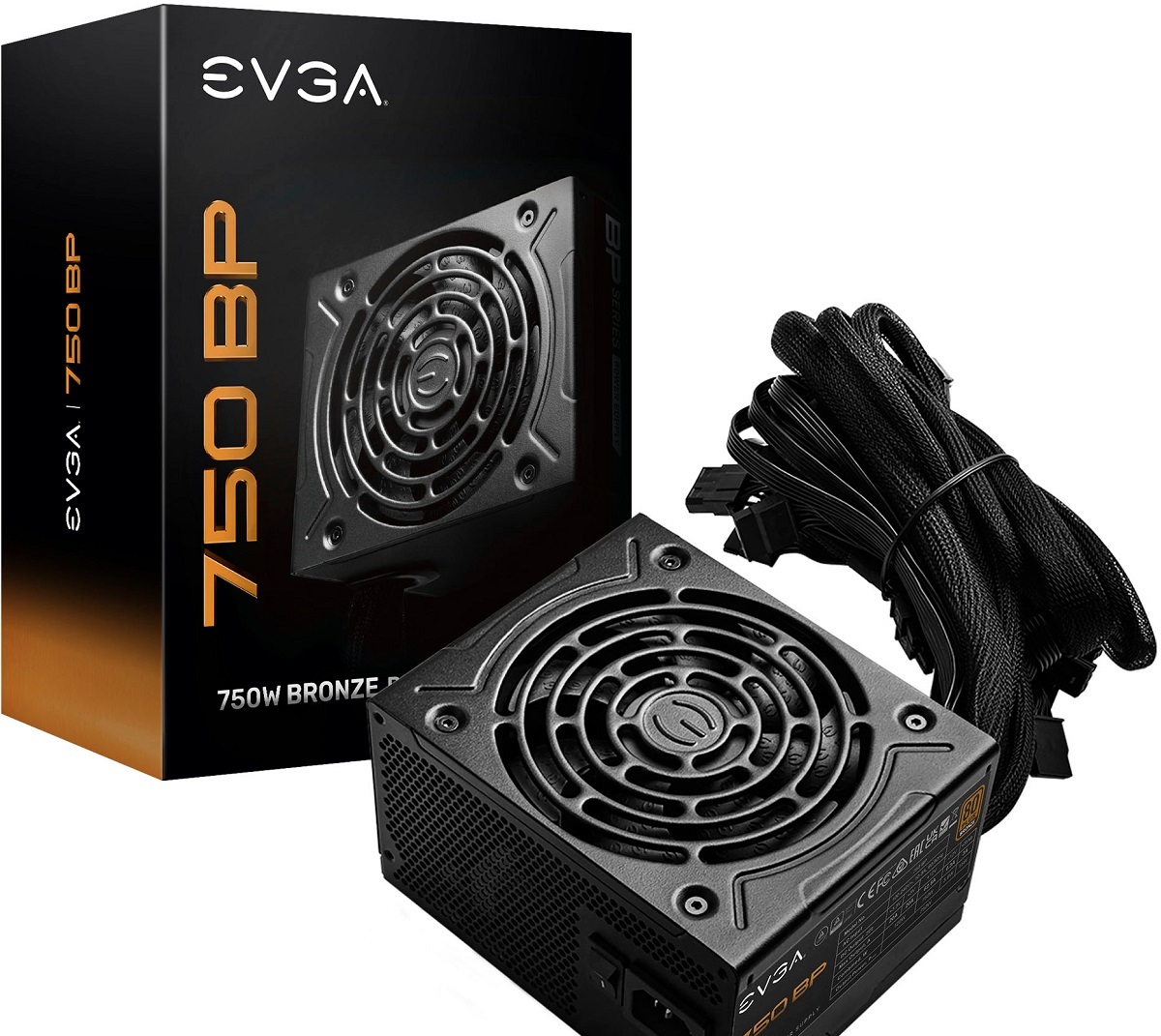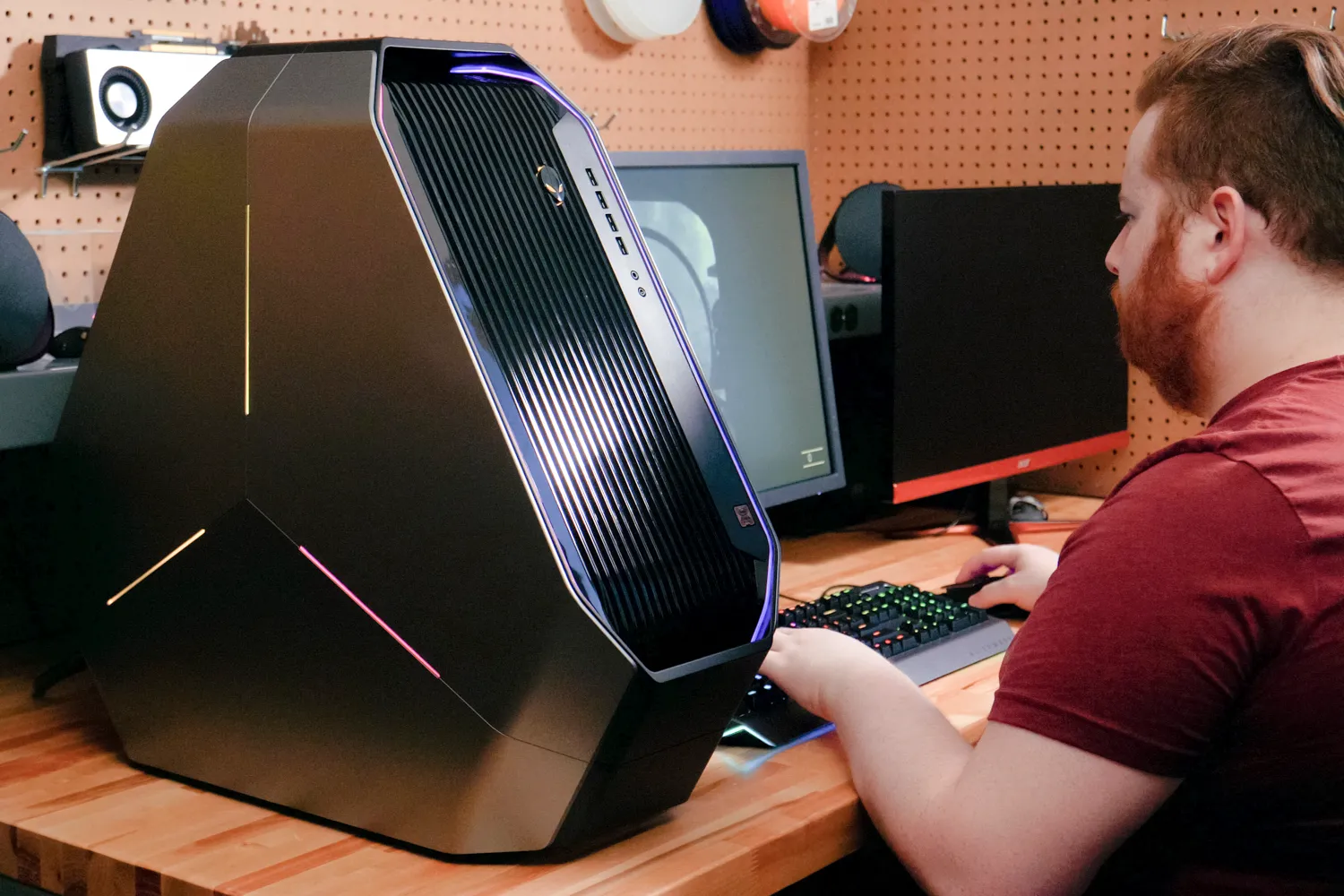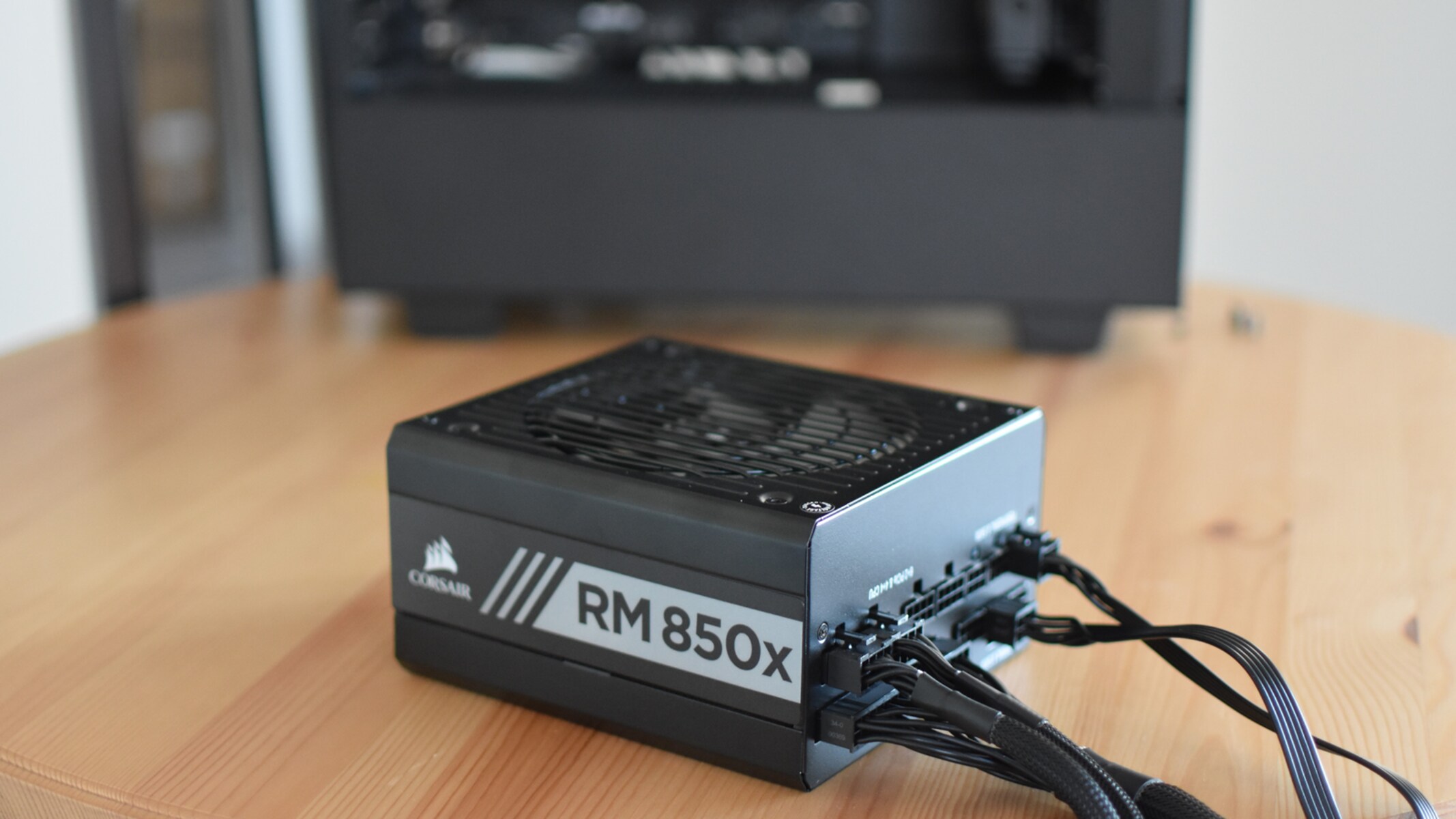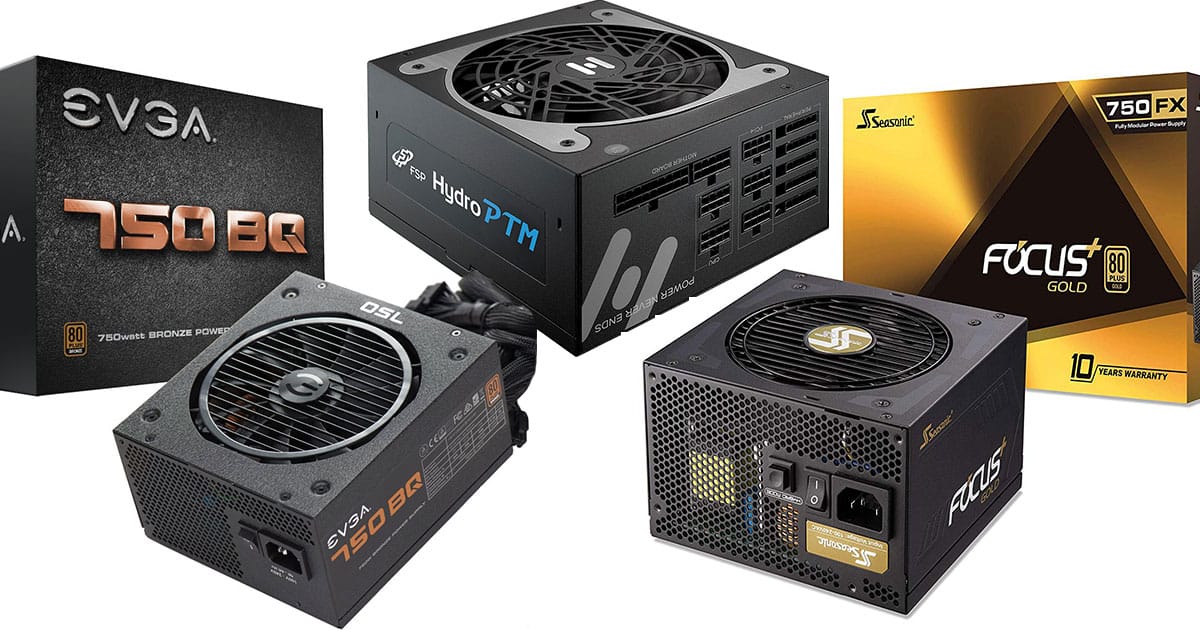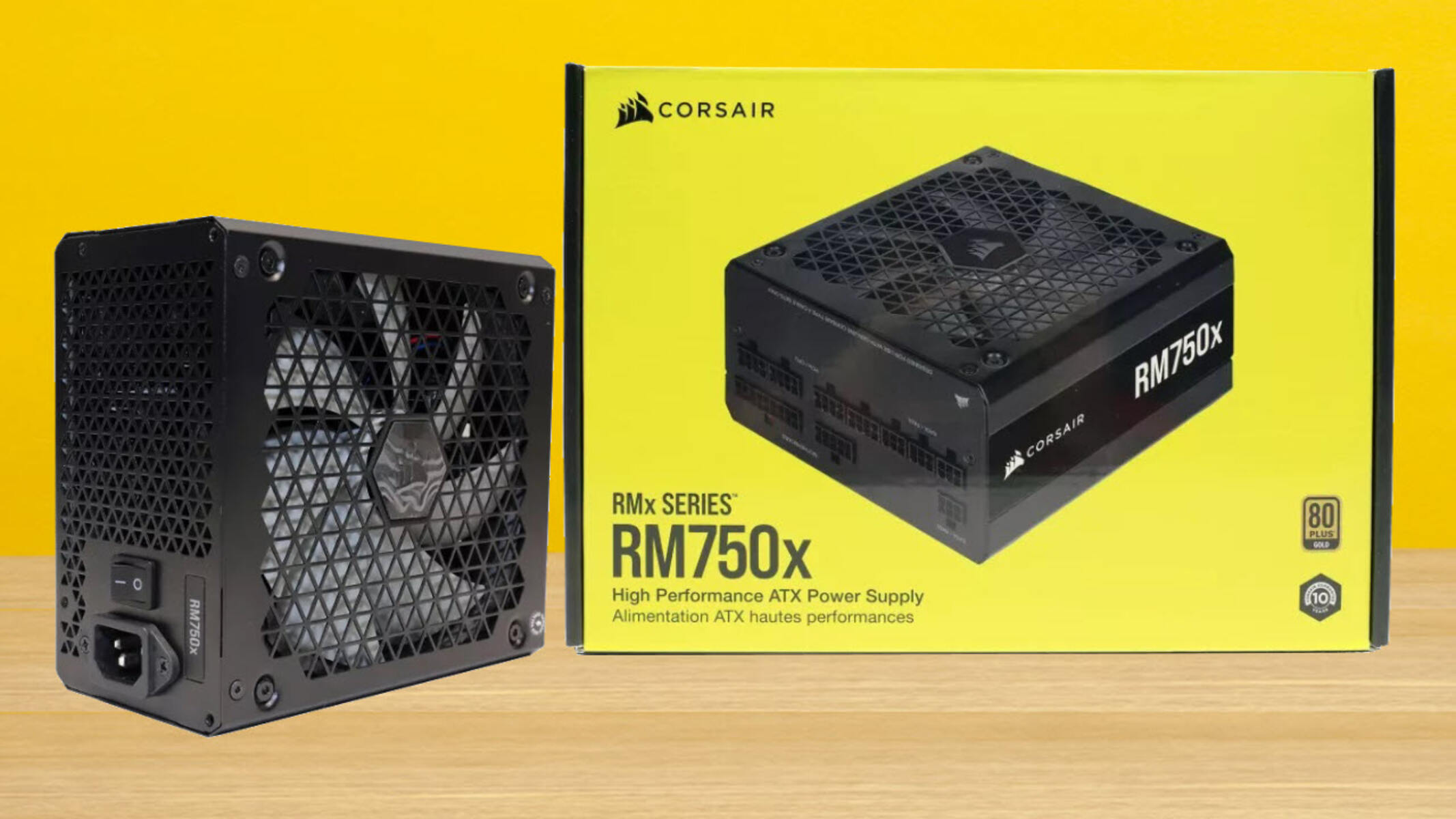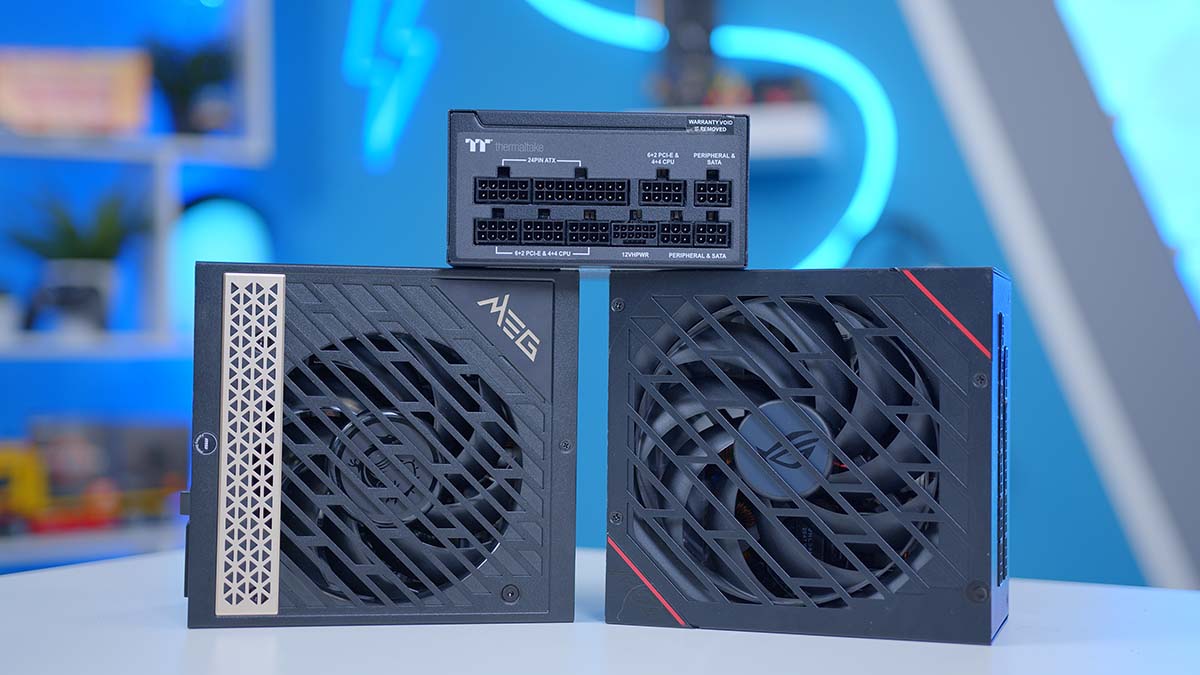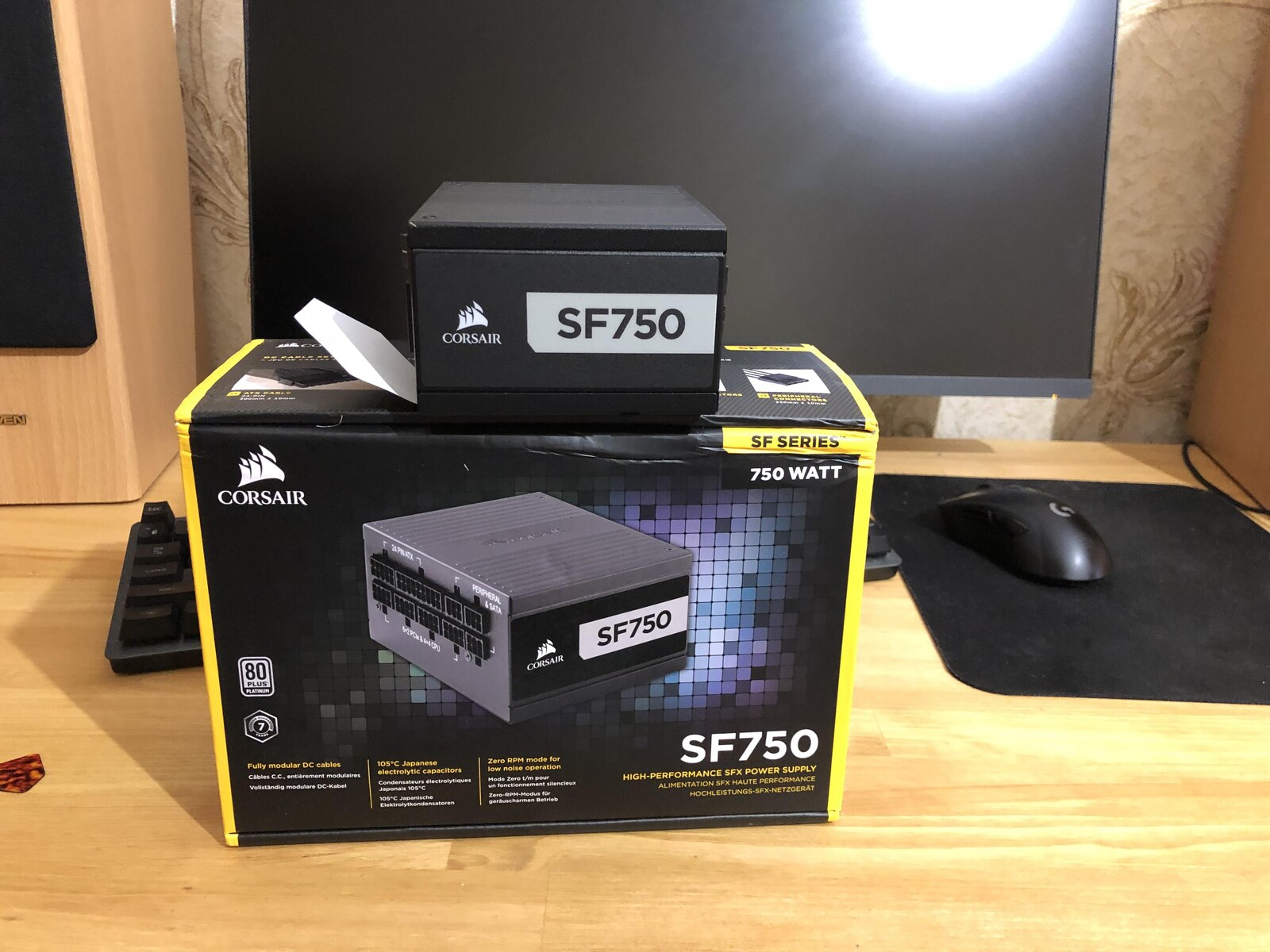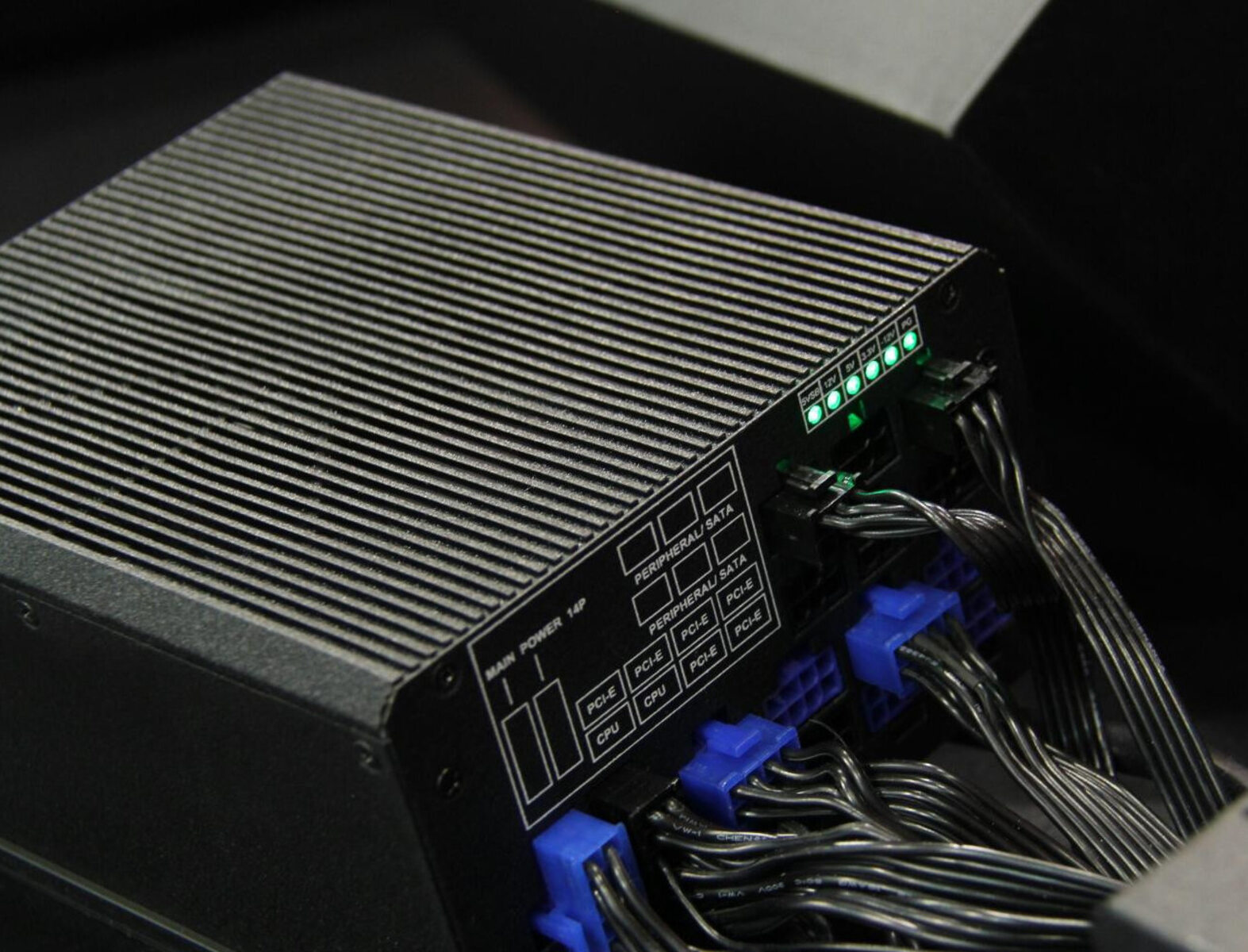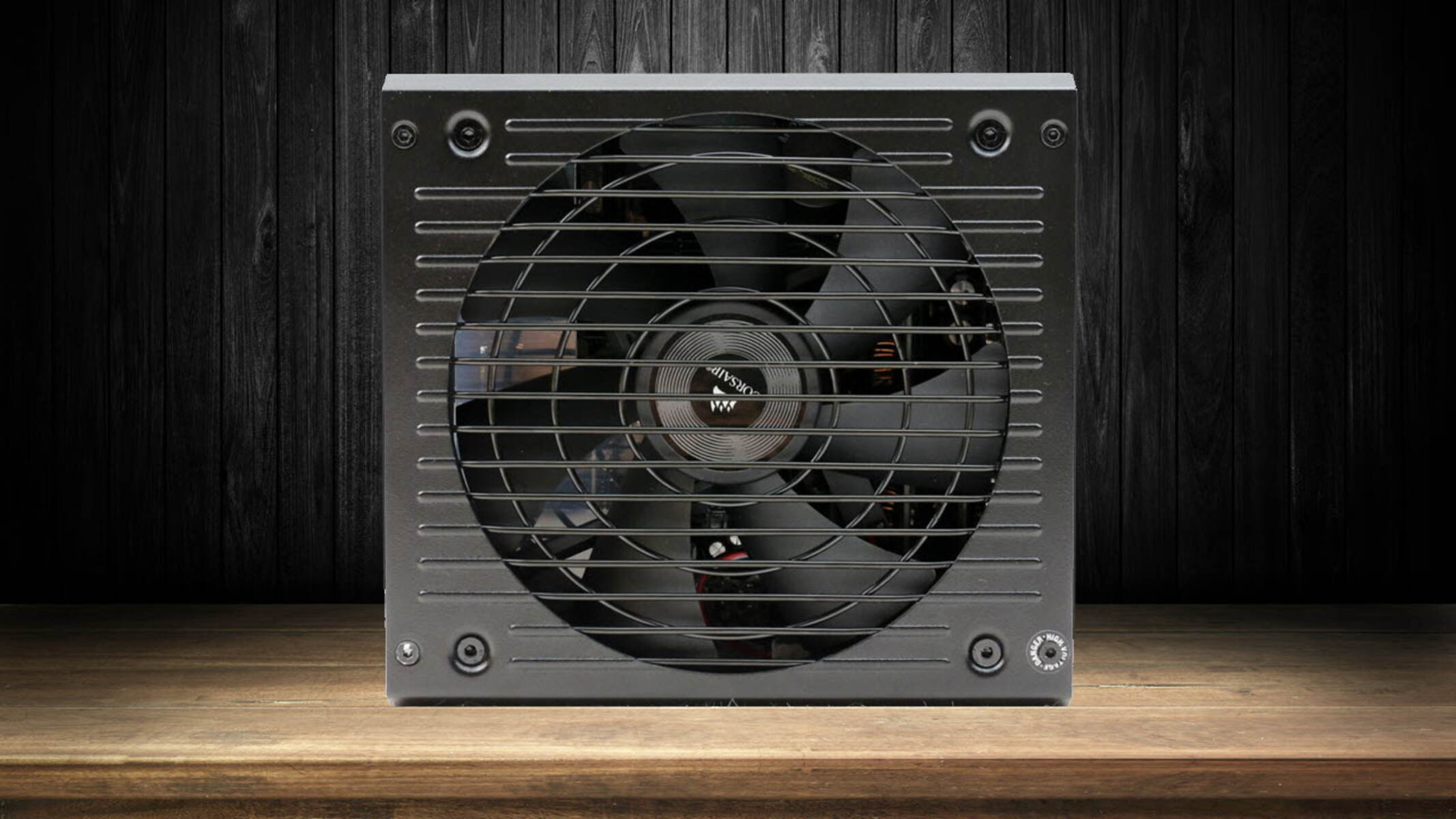Introduction
A power supply unit, or PSU, is a crucial component of any computer system. It is responsible for providing the necessary electrical power to all the components of the computer, allowing them to function properly. The wattage of a PSU determines how much power it can supply to the system, and therefore, it plays a significant role in determining the overall performance and functionality of the computer.
Understanding the capabilities of different types of PSUs is essential, especially when building or upgrading a computer system. A common question that arises is how much can a 750 watt PSU actually handle? In this article, we will explore the potential of a 750 watt PSU and discuss what it is capable of.
Before diving into the specifics, it is important to have a basic understanding of power consumption in computer systems. Different hardware components, such as the CPU, graphics card, hard drives, and peripherals, consume varying amounts of power. Therefore, the more power-hungry components you have in your system, the higher wattage PSU you will require.
The wattage of a PSU is important because it determines the total power output it can provide. If the PSU does not have enough wattage to support the components in the system, it may lead to instability, system crashes, and even potential damage to the hardware. On the other hand, if the PSU has excess wattage, it will not be fully utilized, resulting in inefficiency.
Now, let’s dive into the capabilities of a 750 watt PSU and see how much it can handle in various scenarios.
What is a PSU?
A PSU, or a power supply unit, is a crucial component of any computer system. It converts the alternating current (AC) from the wall outlet into direct current (DC) required by the computer’s components to function properly. The PSU also regulates the voltage levels and provides a stable power supply to ensure the safe operation of the system.
PSUs come in various wattages, ranging from as low as 300 watts to as high as 2000 watts or more. The wattage rating of a PSU indicates the maximum amount of power it can provide. It is important to match the wattage of the PSU with the power requirements of the computer system.
In addition to wattage, PSUs also have efficiency ratings, represented as a percentage. The efficiency rating indicates how effectively the PSU converts AC power to DC power. Higher efficiency ratings mean less power is wasted as heat and more power is delivered to the components. For example, an 80 Plus Gold certified PSU has an efficiency of at least 87% at 20% load, 90% at 50% load, and 87% at 100% load.
PSUs also come in different form factors, such as ATX, SFX, and TFX, to fit different computer cases. The ATX form factor is the most common and is compatible with the majority of desktop motherboards.
Furthermore, PSUs have various connectors to provide power to different components. Common connectors include the 24-pin motherboard connector, PCIe connectors for graphics cards, SATA connectors for storage devices, and Molex connectors for peripherals.
When choosing a PSU, it is important to consider the power requirements of your components. High-performance gaming systems or workstations with powerful CPUs and multiple graphics cards will require a higher wattage PSU compared to a basic home computer or office workstation.
Overall, a PSU is a critical component that should not be overlooked when building or upgrading a computer system. It provides the necessary power and ensures the stability and reliability of the system’s operation.
Understanding Power Consumption
Power consumption refers to the amount of electrical power consumed by a computer system. It is measured in watts and is an important factor to consider when choosing a PSU. Understanding power consumption is essential to ensure that the PSU can provide enough power to all the components in the system.
Each hardware component in a computer system consumes a certain amount of power. The most power-hungry components are the CPU and the graphics card. CPUs come in different power ranges, with high-performance CPUs consuming more power than budget or lower-end options. Similarly, high-end graphics cards require more power to drive their advanced GPUs and deliver optimal performance.
In addition to the CPU and graphics card, other components such as memory modules, storage devices, cooling solutions, and peripherals also consume power, although to a lesser extent. It is important to consider the power requirements of all the components when calculating the overall power consumption of the system.
One way to estimate power consumption is to refer to the manufacturer’s specifications for each component. CPU and graphics card manufacturers often provide information about the typical power draw of their products. However, it is important to note that these values represent the maximum power consumption under load and may not accurately reflect the average power usage during normal usage.
Another method to calculate power consumption is to use online calculators specifically designed for this purpose. These calculators usually consider the power consumption of various components and provide an estimate based on the selected hardware.
It’s worth noting that power consumption can vary depending on the workload. For example, power draw will increase during intensive tasks such as gaming or video editing, and decrease during idle or low-demand periods.
Understanding power consumption is crucial when selecting a PSU. It ensures that the PSU can provide enough power for the system to operate reliably and prevents potential issues such as instability, crashes, or even damage to the hardware due to insufficient power supply.
Next, we will explore the importance of wattage in relation to power consumption and how it affects the choice of a 750 watt PSU.
The Importance of Wattage
When it comes to choosing a power supply unit (PSU) for your computer system, the wattage plays a crucial role. The wattage rating of a PSU determines how much power it can deliver to the components of your system. It is essential to select a PSU with the appropriate wattage for your hardware to ensure optimal performance and stability.
The wattage requirement of a system depends on the power consumption of its components. The more power-hungry the components, the higher the wattage requirement. CPUs, graphics cards, and high-performance hardware generally consume more power than entry-level components.
It is important to note that the power consumption of components can vary depending on the workload. For example, a CPU may consume more power when running resource-intensive applications or during heavy multitasking, while consuming less power during idle or light usage. Graphics cards, on the other hand, may consume more power during graphically demanding tasks such as gaming or rendering.
Choosing a PSU with an insufficient wattage rating can lead to numerous issues. One common problem is system instability. Inadequate power supply may cause the computer to crash, freeze, or reboot unexpectedly. It can also result in poor performance, as the components may not receive enough power to operate at their full potential.
Moreover, using a PSU with insufficient wattage can also be detrimental to the longevity of the components. Underpowering can put additional strain on the hardware, leading to premature wear and potential damage in the long run.
On the other hand, using a PSU with significantly higher wattage than necessary might seem like a good idea to ensure sufficient power delivery. However, this can be inefficient as the PSU would operate below its ideal load range, resulting in wasted energy and increased electricity bills.
A 750 watt PSU offers a suitable wattage for many gaming and high-performance systems. It provides a balance between sufficient power delivery and efficiency. However, it is crucial to evaluate the power requirements of your specific components and system configuration before settling on a PSU.
By selecting a PSU with the appropriate wattage, you can ensure stable and reliable power supply, optimize the performance of your components, and extend the lifespan of your computer system.
Next, let’s explore how much a 750 watt PSU can handle in different scenarios, including gaming performance, high-end graphics cards, multiple storage devices, overclocking potential, custom cooling systems, and RGB lighting.
How Much Can a 750 Watt PSU Handle?
A 750 watt power supply unit (PSU) is considered to be a robust option for many computer systems, offering sufficient power for various setups. Let’s explore the capabilities of a 750 watt PSU and what it can handle in different scenarios.
Gaming Performance:
A 750 watt PSU is more than capable of handling gaming systems. It provides enough power to run high-performance CPUs and graphics cards, ensuring smooth gameplay and optimal performance. Even when using power-hungry components, such as overclocked CPUs and multiple high-end GPUs, a 750 watt PSU can handle the demands of modern games.
High-End Graphics Cards and GPUs:
High-end graphics cards, known for their power-hungry nature, can be powered by a 750 watt PSU. Whether you have a single high-end GPU or multiple graphics cards in a multi-GPU setup, a 750 watt PSU provides the necessary power to drive these components and deliver exceptional graphics performance.
Multiple Hard Drives and SSDs:
If you have multiple storage devices, including hard drives and Solid-State Drives (SSDs), a 750 watt PSU can handle the power requirements. The power consumption of storage devices is relatively lower compared to CPUs and graphics cards, so a 750 watt PSU is more than sufficient to power these components without any issues.
Overclocking Potential:
For users who enjoy pushing their hardware to its limits through overclocking, a 750 watt PSU offers enough headroom to handle the increased power demands. Overclocking can increase the power consumption of components, especially the CPU and GPU, and a 750 watt PSU can provide the necessary power for stable overclocking performance.
Custom Water Cooling Systems:
Custom water cooling systems, which include components such as pumps, radiators, and RGB fans, require additional power. A 750 watt PSU can handle the power requirements of these components, ensuring sufficient power to maintain optimal cooling performance even in heavily overclocked systems.
Adding RGB Lighting and Fans:
RGB lighting and fans have become popular additions in modern computer systems. These components also require power to illuminate and operate effectively. With a 750 watt PSU, you can power multiple RGB lighting strips, RGB fans, and other illuminated peripherals without any issues.
Overall, a 750 watt PSU can handle a wide range of scenarios, including gaming systems, high-end graphics cards, multiple storage devices, overclocking, custom cooling setups, and RGB lighting. It provides sufficient power for these components, ensuring stability, efficiency, and optimal performance.
Next, let’s summarize the key points discussed and wrap up our exploration of the capabilities of a 750 watt PSU.
Gaming Performance
Gaming performance is a crucial aspect for many computer enthusiasts, and having the right power supply unit (PSU) is essential to ensure optimal gaming experiences. A 750 watt PSU is more than capable of handling the power demands of gaming systems, providing sufficient power to support high-performance CPUs and graphics cards.
Today’s games require powerful hardware to deliver smooth gameplay and stunning graphics. The CPU and graphics card play key roles in determining gaming performance, and they are often the components with the highest power consumption in a gaming system.
A 750 watt PSU can comfortably handle the power needs of most gaming PCs. It provides enough wattage to support high-performance CPUs, including those with multiple cores and high clock speeds. Whether you have an Intel Core i7 or Ryzen 9 processor, a 750 watt PSU ensures that your CPU gets the power it needs to deliver strong gaming performance.
Graphics cards are another critical component that heavily impacts gaming performance. High-end GPUs, such as the NVIDIA GeForce RTX series or AMD Radeon RX series, require more power to drive their advanced features and deliver smooth frame rates. A 750 watt PSU can handle single high-end graphics cards, allowing them to operate at their full potential.
In addition, a 750 watt PSU also enables multi-GPU setups, where multiple graphics cards are connected for enhanced graphics performance. This is particularly useful for gaming enthusiasts who want to achieve maximum performance by utilizing technologies such as SLI or CrossFire. The extra wattage provided by a 750 watt PSU ensures that each GPU receives sufficient power for optimal performance in multi-GPU configurations.
Gaming systems often feature other power-consuming components such as high-speed memory modules, fast storage devices like solid-state drives (SSDs), and cooling solutions like liquid coolers. A 750 watt PSU can easily cope with the power demands of these components, providing stable and reliable power to the entire gaming system.
With a 750 watt PSU, gamers can enjoy playing the latest and most demanding games without worrying about power supply limitations. It ensures that the CPU and graphics card have sufficient power to deliver smooth frame rates, vibrant visuals, and immersive gaming experiences.
Overall, a 750 watt PSU is an excellent choice for gaming enthusiasts who want to build a powerful gaming rig. It provides the necessary power supply to support high-performance CPUs, high-end graphics cards, and other power-hungry components, making it an essential component for top-notch gaming performance.
Next, we will discuss the capabilities of a 750 watt PSU in handling high-end graphics cards and GPUs.
High-End Graphics Cards and GPUs
High-end graphics cards and GPUs are the powerhouses behind stunning visuals and high-performance gaming. These components are known for their exceptional power requirements, and a 750 watt power supply unit (PSU) is more than capable of handling their demands.
Modern high-end graphics cards, such as the NVIDIA GeForce RTX series or the AMD Radeon RX series, feature advanced architectures, massive amounts of video memory, and various cutting-edge technologies. These components deliver realistic graphics, smooth frame rates, and support for features like ray tracing and virtual reality.
High-end graphics cards are power-hungry due to their robust processing capabilities and advanced features. They require a reliable and capable power supply to deliver optimal performance without stability issues. A 750 watt PSU is an excellent choice to power high-end graphics cards, as it provides sufficient wattage to meet their power consumption requirements.
A single high-end graphics card typically consumes around 250 to 300 watts under load, depending on the specific model and its overclocking potential. With a 750 watt PSU, you have enough headroom to accommodate the power demands of a powerful graphics card while enabling additional power for other components.
Moreover, a 750 watt PSU is also suitable for multi-GPU setups. Enthusiasts who desire even greater graphics performance can utilize technologies such as NVIDIA’s SLI (Scalable Link Interface) or AMD’s CrossFire to connect multiple high-end graphics cards. With a 750 watt PSU, each GPU in the configuration will receive the necessary power to operate at its optimal level, enabling remarkable graphics performance in multi-GPU setups.
It’s important to note that not all high-end graphics cards consume the same amount of power. Some models may require slightly less power, while others may have higher power requirements. It is always recommended to check the manufacturer’s specifications for the specific power consumption details of your chosen graphics card.
In addition to high-end graphics cards, a 750 watt PSU can also handle other power-hungry components commonly found in gaming systems, such as overclocked CPUs, multiple storage devices, and custom cooling solutions. This ensures that your entire system gets the power it needs to operate efficiently and reliably.
In summary, a 750 watt PSU offers sufficient power to handle high-end graphics cards and GPUs, providing stable and reliable power for optimal gaming performance. Whether you opt for a single powerful graphics card or choose to harness the power of multiple GPUs in SLI or CrossFire configurations, a 750 watt PSU will meet the power demands of these high-performance components.
Next, we will explore how a 750 watt PSU can handle multiple hard drives and SSDs in a system.
Multiple Hard Drives and SSDs
In many computer systems, particularly those used for multimedia, gaming, or professional tasks, multiple storage devices are a common requirement. Whether it’s traditional hard disk drives (HDDs) or modern solid-state drives (SSDs), a 750 watt power supply unit (PSU) is more than capable of handling the power needs of these storage devices.
When it comes to storage, each hard drive or SSD consumes a relatively small amount of power compared to components like CPUs or graphics cards. The power consumption of storage devices typically ranges from just a few watts for idle or low-load scenarios, up to around 10 watts for more demanding operations.
A 750 watt PSU has more than enough power to comfortably supply energy to multiple hard drives and SSDs. Whether you have two, four, or even more storage devices, such as a combination of HDDs and SSDs, the overall power consumption of these devices will not strain a 750 watt PSU.
Furthermore, it’s worth noting that the wattage requirement of storage devices is influenced by their size, speed, and workload. For example, larger capacity hard drives or high-performance SSDs might consume slightly more power than their lower-capacity or slower counterparts. However, the power consumption of storage devices in general is relatively modest compared to other components found in a typical computer system.
When calculating the power requirements for storage devices, it’s essential to consider multiple factors, including the number of drives, their capacities, RPM (rotations per minute) for traditional hard drives, and the overall workload of the system. However, a 750 watt PSU is more than capable of handling these considerations, providing sufficient power to ensure the stable operation of all storage devices.
In addition to multiple hard drives and SSDs, a 750 watt PSU can power other power-hungry components in the system, such as high-performance CPUs, graphics cards, cooling solutions, and other peripherals. The power supply’s ample wattage ensures that each component in the system receives the necessary power to operate effectively and reliably.
In summary, a 750 watt PSU can easily handle multiple hard drives and SSDs in a system. It provides sufficient power to ensure the stable operation of these storage devices while accommodating other power-hungry components. So, whether you have a variety of storage devices for extensive data storage or a combination of HDDs and SSDs for different purposes, a 750 watt PSU is more than capable of meeting the power demands of your system.
Next, we will delve into the overclocking potential of a system powered by a 750 watt PSU.
Overclocking Potential
For computer enthusiasts who desire maximum performance from their hardware, overclocking is a popular practice. Overclocking involves pushing the components of a computer system beyond their default settings to achieve higher clock speeds and increased performance. When it comes to overclocking, the power supply unit (PSU) plays an important role, and a 750 watt PSU offers excellent potential for overclocking.
Overclocking typically increases the power consumption of components, especially the CPU and GPU. As the clock speeds and voltages are increased to achieve higher performance, the power requirements of these components also go up. It is crucial to have a PSU that can deliver sufficient power to support the increased demands of overclocked components.
A 750 watt PSU provides ample power for successful overclocking. It ensures that the CPU and GPU receive the necessary power to operate at higher clock speeds without encountering stability issues or voltage drops. The extra wattage offered by a 750 watt PSU allows for headroom, ensuring that power demands are met even under the increased load of overclocked components.
Furthermore, a 750 watt PSU is also crucial for users looking to overclock multiple components simultaneously. For example, those interested in pushing both the CPU and GPU to their limits will require additional power to accommodate the increased demand. A 750 watt PSU provides the necessary wattage to support these simultaneous overclocks, ensuring a stable and reliable power supply to all components.
When overclocking, it’s worth noting that the power consumption varies depending on the specific hardware and the extent of the overclock. Different CPUs and GPUs have varying power requirements at different clock speeds. It is essential to consult the manufacturer’s specifications or other reliable sources for details about the power consumption of your specific components.
Additionally, when overclocking, it’s crucial to consider cooling as well. Overclocked components generate more heat, and adequate cooling is necessary to maintain optimal performance and prevent overheating. A high-quality 750 watt PSU, typically accompanied by efficient cooling systems, assists in maintaining stable power delivery and supporting the cooling requirements of overclocked components.
In summary, a 750 watt PSU offers excellent potential for overclocking. It provides sufficient power to support higher clock speeds and increased voltage requirements of overclocked CPUs and GPUs. With a 750 watt PSU, enthusiasts can pursue their overclocking ambitions with confidence, knowing that their system has a reliable power supply to handle the increased demands.
Next, we will explore the capabilities of a 750 watt PSU in supporting custom water cooling systems.
Custom Water Cooling Systems
Custom water cooling systems have gained popularity among PC enthusiasts and gamers who want to achieve superior cooling performance for their high-performance systems. These systems involve replacing traditional air cooling solutions with custom loops that utilize water blocks, pumps, radiators, and tubing. When it comes to powering custom water cooling setups, a 750 watt power supply unit (PSU) is more than capable of handling the power requirements.
Custom water cooling systems require additional power for components such as pumps, fans, and RGB lighting, in addition to the power needed for the rest of the computer system. A 750 watt PSU offers sufficient wattage to support these power-hungry components, ensuring optimal performance and stability.
When water-cooling a system, the CPU and GPU are typically the two main components that require water blocks for effective heat dissipation. Both the CPU and GPU blocks require power, which is typically supplied through the motherboard’s fan headers. A 750 watt PSU provides ample power to support these water blocks while still having enough headroom for the rest of the system.
The cooling system’s pump is another crucial component that requires power to circulate the coolant within the loop. Custom water cooling pumps consume relatively low power, usually ranging between 5 to 15 watts. A 750 watt PSU easily handles the power requirements of these pumps, ensuring reliable operation and optimal cooling performance.
In addition to pumps, custom water cooling systems often include multiple high-performance fans for efficient heat dissipation from the radiators. These fans, along with any other cooling fans in the system, require power to function effectively. A 750 watt PSU provides sufficient power to drive these fans without compromising performance or stability.
Moreover, custom water cooling setups often feature RGB lighting components to enhance aesthetics. These lighting systems require additional power to illuminate the water blocks, tubing, and other elements. With a 750 watt PSU, there is ample power available to supply electricity to these RGB lighting components while still providing stable power to the rest of the system.
Overall, a 750 watt PSU is well-equipped to handle the power requirements of custom water cooling systems. It provides enough wattage to support the pumps, fans, lighting systems, and other power-hungry components, ensuring optimal cooling performance and system stability.
Next, we will discuss how a 750 watt PSU can handle the power demands of adding RGB lighting and fans to a system.
Adding RGB Lighting and Fans
In recent years, RGB lighting and fans have become increasingly popular among PC builders and enthusiasts. These components add an eye-catching aesthetic appeal to computer systems, enhancing the overall visual experience. When it comes to powering RGB lighting and fans, a 750 watt power supply unit (PSU) is more than capable of handling their power requirements.
RGB lighting components, such as LED strips, RGB fans, and illuminated peripherals, require power to operate and produce vibrant, customizable lighting effects. The power consumption of RGB lighting varies depending on the number and brightness of the LEDs used in each component. However, RGB lighting typically consumes relatively low power, allowing a 750 watt PSU to easily provide sufficient power for these components.
RGB fans are another popular addition to computer systems, offering both aesthetics and improved airflow. These fans often feature built-in RGB lighting, adding an extra level of visual appeal. While RGB fans consume slightly more power than standard non-RGB fans due to the lighting elements, a 750 watt PSU is more than capable of handling multiple RGB fans in a system.
When it comes to power consumption, it’s essential to consider the total power drawn by RGB lighting and fans in addition to other components. While RGB lighting and fans can add a visually pleasing element to a computer system, their power requirements are minimal compared to power-hungry components like CPUs and graphics cards.
A 750 watt PSU provides sufficient power to energize these RGB lighting and fan components, preserving a stable power supply for the entire system. With a 750 watt PSU, users have the freedom to add multiple RGB lighting strips, RGB fans, and illuminated peripherals without worrying about power limitations.
Furthermore, a 750 watt PSU ensures that there is ample wattage available for other power-hungry components in the system, such as high-performance CPUs, graphics cards, and storage devices. This allows users to build a system that combines both aesthetics and high-performance without compromising stability or power supply capacity.
It’s worth noting that the actual power consumption of RGB lighting and fans may vary depending on the specific components being used and the settings chosen for the lighting effects. For accurate power consumption figures, it is advisable to refer to the manufacturer’s specifications or check product reviews from reliable sources.
In summary, a 750 watt PSU is well-suited to power RGB lighting and fans in computer systems. It provides enough wattage to support multiple RGB lighting components and fans, allowing users to create eye-catching visual effects without compromising system performance or stability.
Lastly, we will conclude the article by summarizing the key points discussed throughout this exploration of a 750 watt PSU’s capabilities.
Conclusion
In conclusion, a 750 watt power supply unit (PSU) offers excellent capabilities and versatility for a wide range of computer systems. Understanding the importance of wattage and power consumption is key to selecting the right PSU, and a 750 watt PSU provides sufficient power for most scenarios.
We explored how a 750 watt PSU is suitable for gaming performance, handling high-end graphics cards and GPUs, powering multiple hard drives and SSDs, supporting overclocking potential, handling custom water cooling systems, and accommodating RGB lighting and fans.
For gaming enthusiasts, a 750 watt PSU ensures that high-performance CPUs and graphics cards receive reliable power, delivering smooth gameplay and optimal performance. It can handle single high-end graphics cards or multi-GPU configurations, enabling exceptional graphics performance.
When it comes to storage, a 750 watt PSU easily supports multiple hard drives and SSDs, providing sufficient power while accommodating other power-hungry components. This allows for extensive data storage and fast storage access in gaming or professional systems.
Overclocking enthusiasts can push their components to their limits with confidence, as a 750 watt PSU offers the extra power required for stable overclocking. It supplies the necessary power for increased clock speeds and voltages, ensuring optimal performance without compromising stability.
Custom water cooling systems, known for their enhanced cooling performance, can be powered by a 750 watt PSU without any issues. It provides sufficient power for the water blocks, pumps, fans, and RGB lighting that make up these custom cooling setups.
In addition, a 750 watt PSU easily handles the power requirements of RGB lighting and fans, allowing users to create visually stunning effects without compromising system performance or stability.
Overall, a 750 watt PSU offers a balanced combination of power and efficiency, making it a reliable choice for a wide range of computer systems. It ensures stable power delivery to all components, allowing for optimal performance, longevity, and an enjoyable user experience.
Whether you’re building a gaming rig, a high-performance workstation, or a multimedia-focused system, a 750 watt PSU provides the power needed to support your system’s demands. Before making a purchase, be sure to evaluate the power requirements of your specific components and choose a PSU that suits your needs.
With a 750 watt PSU, you can build a powerful and efficient system that meets your requirements and delivers exceptional performance, whether you’re a gamer, a content creator, or a professional user.







